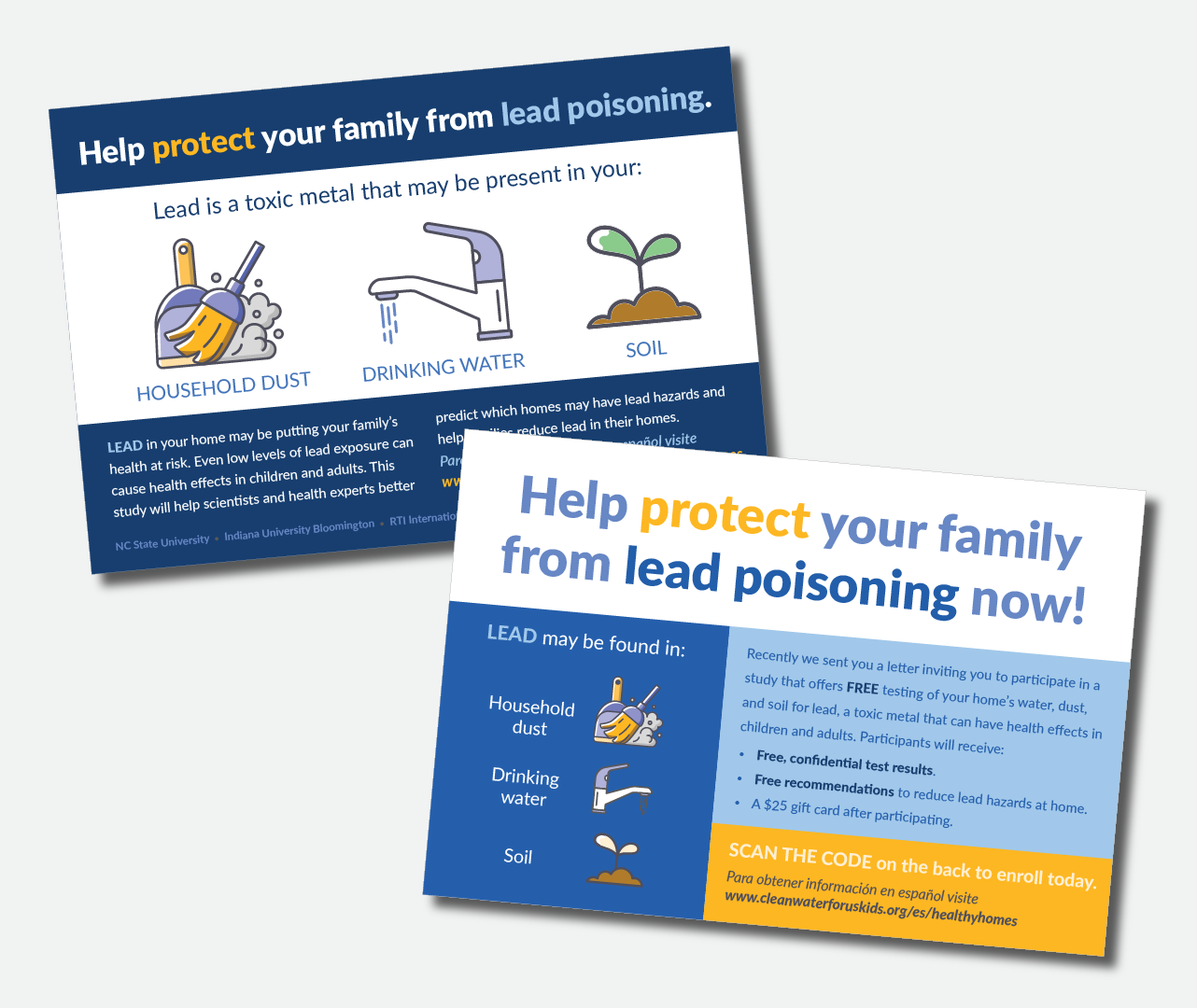
Is your home lead-free?
Protect against lead poisoning
Our research study team will help you test your home for lead in dust, soil, and water.

Lead has been used in household paint, plumbing materials, gasoline, and consumer products. Lead from these sources could have contaminated your home dust, water, and soil.

We are conducting a research study to better understand and predict where lead hazards occur. We are inviting households to participate because lead hazards can be harmful to your family’s health, and we want to help by offering free testing of your water, dust, and soil for lead.
This is a grant study with Indiana University, North Carolina Agricultural and Technical State University, and RTI International to test for lead in the soil, dust, and water in homes. Click here for more information about the grant funding and study areas.

What is lead?
Lead is a toxic metal that can be found in our environment and in many products we use today. Even low levels of lead exposure can cause intellectual disabilities and behavioral disorders in children and cardiovascular effects in adults. Hence, there is no safe level of lead exposure.

You cannot see, smell, or taste lead. Lead hazards can remain in our environment unless they are detected and safely fixed.
Identifying lead hazards is a first step in limiting lead exposure. Our approach is trying to detect and reduce lead hazards in homes before they can affect you and your family. Enroll now to test your home.
If you have already fixed lead hazards in your home, we still want to test your home. Testing your fixed home will help us understand better how much lead is in water, dust, and soil after fixing it.

You can take three easy steps in your home to protect your family from lead exposure.
1) Test your water, dust, and soil for lead. By tackling the primary home lead hazards first, you are strategically reducing your family’s greatest risks of lead exposure.
2) Adopt practices to safely reduce exposure to lead in water, dust, and soil. There are even low-cost practices to reduce lead from these sources. Learn more from this handout.
3) Detect other potential lead sources and adopt behaviors to further reduce your family’s exposure. Even small amounts from multiple sources can add up to your daily exposure. Learn more from this handout.
If you have children, we also recommend routine blood lead testing. Easy precautions, like always washing hands immediately before eating, can reduce lead exposure.

If you received a letter from us, inviting you to the study, then you are eligible to participate as a community scientist. You can enroll by sending back the form that came with the letter, or by filling out the form online here https://go.iu.edu/4fjZ.
If you have questions, you can contact us here.
If you participate, we will:
- Mail you a free in-home sampling kit for water, soil, and dust.
- Share video and written instructions on how to collect and ship your samples. Following the instructions is simple, and if followed correctly, you will not disrupt any potential lead hazards.
- Provide a prepaid return shipping label and box so you can send your samples to our lab.
- Share your results with you, along with information on how to reduce lead exposure.
- Provide you with a $25 gift card after participating in the research project.

There are steps you can take in everyday life to avoid or minimize lead exposure, like wet wiping windowsills and wet mopping floors at least once a week. See our handout for more information. In addition, participants in our study will receive tailored recommendations for action, based on their home test results.